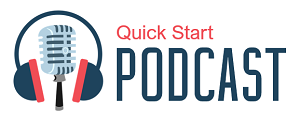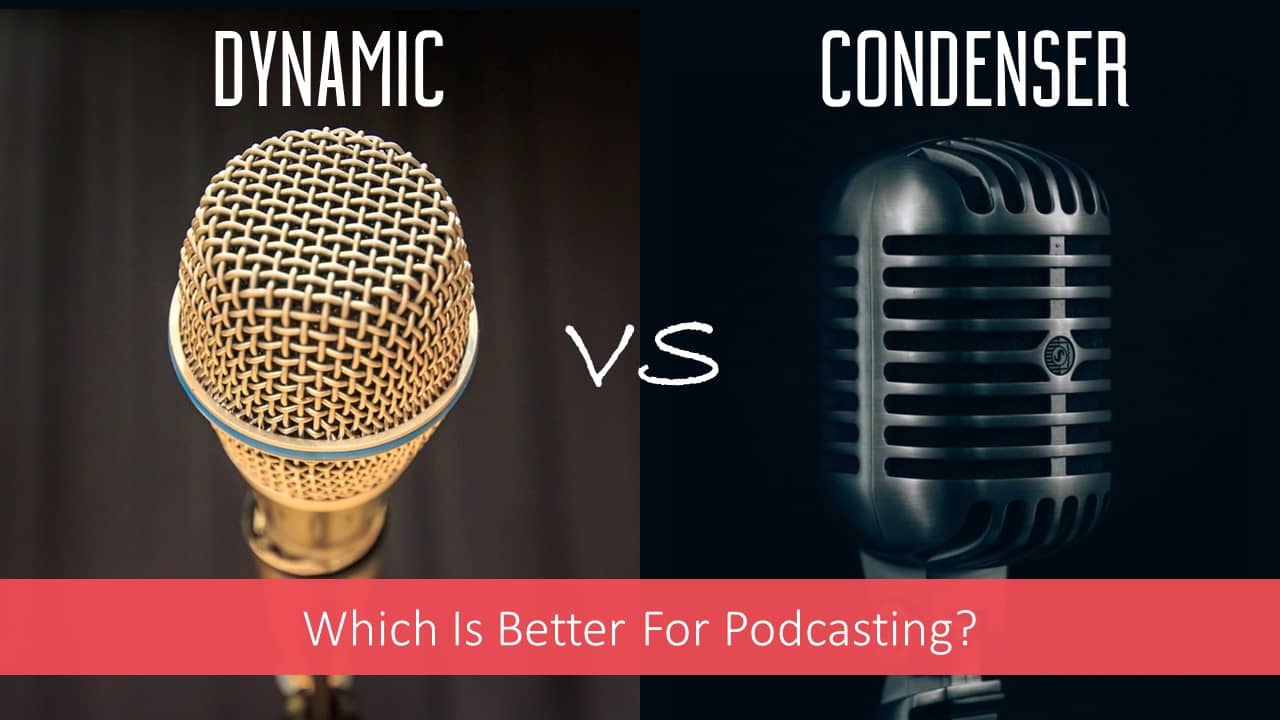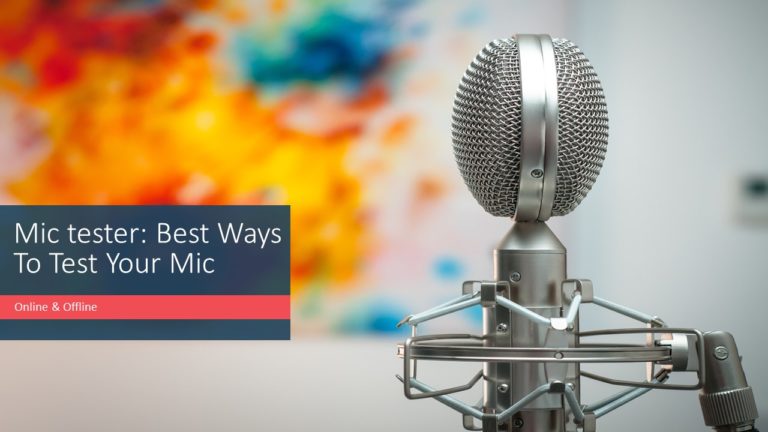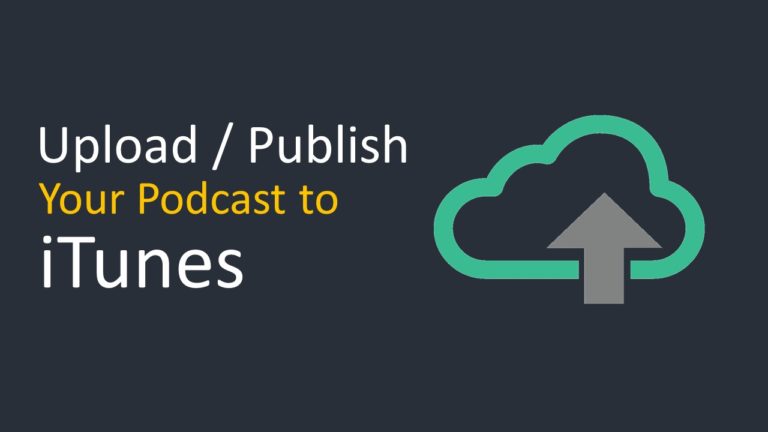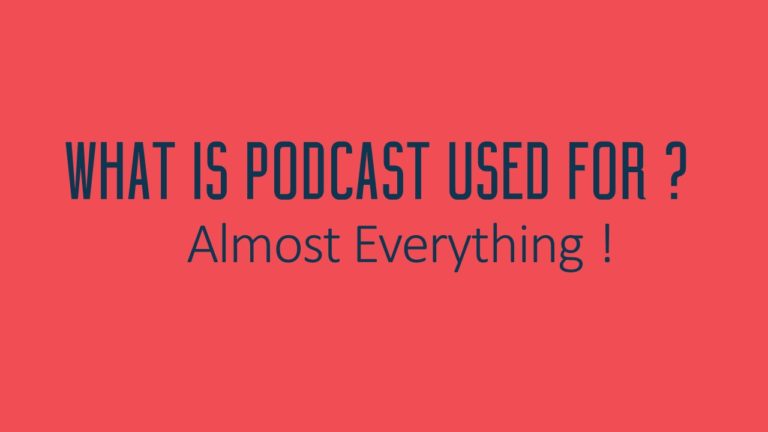Dynamic Or Condenser Microphone: Which Is Better For Podcasting?
Podcasting is an audio-based communication and the quality of audio matters the most. Selecting the right type of microphone is important and that’s where Dynamic or Condenser microphone comes into picture.
Dynamic vs condenser mic :
Dynamic microphones work on the principle of electromagnetism and are generally less sensitive by design. They can handle high sound levels and are generally cheaper. Condenser microphones are capacitor type microphones , they are highly sensitive and require an external power called Phantom power. Condenser mics can produce more spacious and deep vocals.
Both dynamic and condenser microphones can work for podcasting.
Which one should you chose ?
Good quality dynamic mics are available at low starting price and are a good option to start recording your podcasts at home. They are very good for vocals especially with right microphone techniques.
Condenser microphones tend to have more spacious and can give a deep, high quality vocals. They tend to be more costly and need a quieter place to record compared to dynamic mics due to their higher sensitivity. If you wish to record podcast in group or in interview format they can really help a lot.
Lets take a look at both of them in more detail. You can read our post on ASMR microphone and DSLR microphone as well.
Summary and Recommendations
Following is the list of Dynamic and Condenser microphones we recommend across all budget range.
| Image | Product | Microphone Type | Price |
|---|---|---|---|
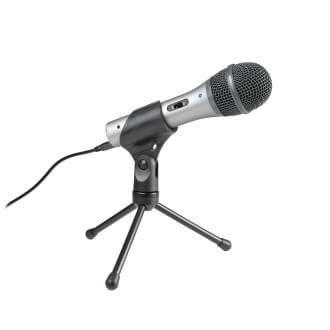 |
Audio Technica ATR2100X USB Dynamic Microphone Best Budget Dynamic Microphone for podcasting and vocals Under 100 USD |
Type: Dynamic |
Check Price |
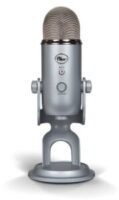 |
Blue Yeti Condenser USB Microphone Best Overall Budget Microphone for all applications Under 200 USD |
Type: Condenser |
Check Price |
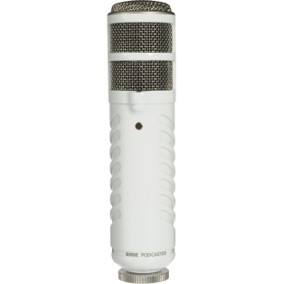 |
Rode Podcaster USB Dynamic Microphone Best professional sounding microphone Under 300 USD |
Type: Dynamic |
Check Price |
 |
Rode Broadcaster Professional Condenser Broadcasting grade microphone Best broadcast quality condenser microphone Under 400 USD |
Type: Dynamic |
Check Price |
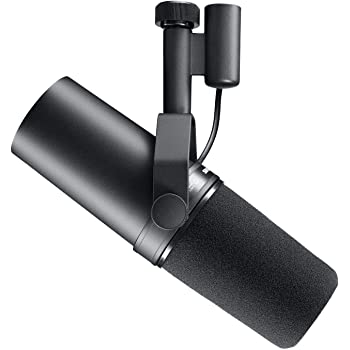 |
Shure SM7B Dynamic Microphone Best Dynamic Microphone for podcasting and vocals Under 400 USD |
Type: Dynamic |
Check Price |
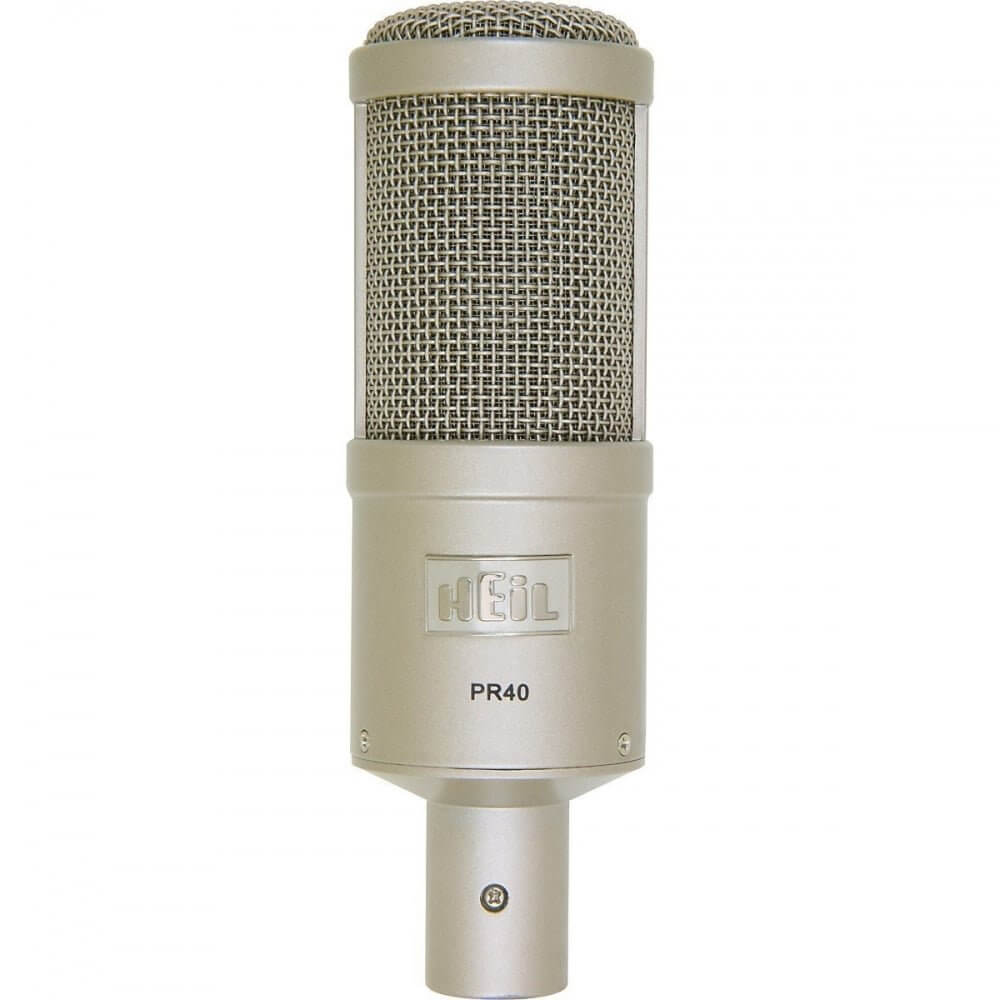 |
Heil PR-40 Professional Condenser Microphone Best Microphone for podcasting and vocals money can buy ! Under 500 USD |
Type: Condenser |
Check Price |
What matters in a podcast microphone?
In many cases listeners will unsubscribe the podcast if the quality of audio is not up to the mark. While selecting the microphone there are many aspects to look at such as …
- Audio quality
- Type of connection: USB or XLR
- Type of technology: Dynamic or Condenser microphone
- Polar Pattern
- Portability
- Durability
- Looks and aesthetics (depends on your use case !!)
Dynamic vs Condenser mic
There are two types of microphone commonly used for podcasting, condenser mic vs dynamic mic. In this article we’re going to discuss about the difference between condenser and dynamic mics.
Making a choice between dynamic vs condenser microphone is a difficult choice and this article will help you to make that. To learn more about the difference between XLR and USB mics check out our other post by clicking here.
Dynamic vs condenser mic sound fairly different, so personal preference plays a big part in your choice but there are also some technical differences that are worth knowing.
There are also two different ways of connecting those mics to your recording device either USB or XLR. These are independent of each other, for example you can have condenser mics with either XLR or USB connectors and vice versa.
If you are looking to buy a microphone for podcasting then here are our picks.
As an Amazon Associate I earn from qualifying purchases
What is a dynamic microphone?
Dynamic microphones work on the principle of electromagnetism. They have a fairly simple construction.
How a Dynamic microphone works ?
A voice coil is connected to the back side of a plastic membrane known as diaphragm, and there is a magnet surrounding this coil. When sound waves hit the microphone, the membrane vibrates to the frequency of the sound waves, and the coil on its back side moves along with it.
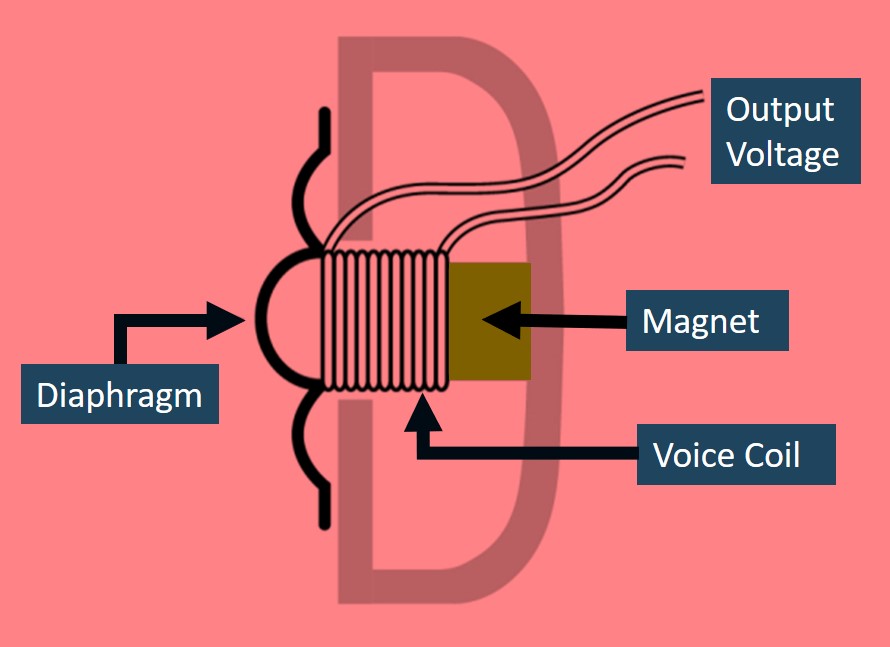
The relative movement of the coil within the magnetic field induces a small signal voltage in this coil. Thus, the sound energy is converted into electrical energy.
Advantages of Dynamic Microphone for podcast
- Dynamic microphones have relatively simple to make and are therefore can be more economical.
- They can provide excellent sound quality and good specifications in all areas of microphone performance.
- You can also get nice and close to a dynamic mic and take advantage of a phenomena called the proximity effect which gives you that classic intimate radio sound with a nice low-end.
- Dynamic microphones can handle extremely high sound levels: it is almost impossible to overload a dynamic microphone. Dynamic mics are generally less sensitive by design and there are some benefits to this, for example they’re more forgiving if there are sudden outbursts of volume.
- Dynamic microphones are relatively unaffected by extremes temperature or humidity and can have long durable lifespan. They are more rugged in construction, sturdy and resilient to rough handling.
- Dynamic mics also tend to pick up only what is directly in front of the grill. So, if you have loud co-hosts or a noisy space, you’ll pick up less of them and therefore have a cleaner recording.
- Dynamic mics do not require Phantom power.
Disadvantages of Dynamic microphone for podcast
- They are less sensitive by design.
- Heavy microphone diaphragm and wire coil limits the movement of the assembly, which in turn restricts the frequency and transient response of the microphone.
- Generally dynamic microphones are not as suitable for recording instruments, especially with higher frequencies and harmonics, such as a violin.
- Dynamic microphones do not usually have the same flat frequency response as condenser microphones. Instead they generally have a tuned frequency response for particular application depending on the design of diaphragm and coil.
Use of Dynamic microphone in Podcasting
Dynamic microphone is a good choice for podcasting. Dynamic mics have a low starting price and can be a good option for people starting out.
Since you are looking only to record your voice, they can do a perfect job and will certainly produce a great sounding podcast. This is especially true if you can get nice and close to the microphone to get nice low-end frequencies.
Dynamic mics are preferred if you have a noisy room or loud co-hosts or you have a multiple mic setup. Each person speaking can have an own dedicated dynamic mic to record a nice and clean conversation or discussion. They are also a good choice if you are recording on the go or travel a lot with your podcasting kit as they are rugged and sturdy.
Examples of Dynamic microphones for podcasting
- Audio-Technica ATR2100
- Shure SM58-LC
- Heil PR-40 Dynamic Studio Recording Microphone
- Shure SM7B Dynamic Cardioid Microphone
- ElectroVoice RE-320 Dynamic Microphone
- Rode ProCaster Dynamic Broadcast Microphone
As an Amazon Associate I earn from qualifying purchases
What is a condenser microphone?
The condenser type of microphone is actually a capacitor type microphone. A capacitor consists of two metal plates really close to each other. Gap between the two plates dictates the capacitance and hence the electrical signal output. Any change in gap will change the output. The same principle is used in case of condenser microphones.
How a Condenser microphone works ?
Condenser microphone capsule consists of a diaphragm in close proximity of a metal plate. The diaphragm is made up of a conductive material. As the sound waves hit the diaphragm, it vibrates or moves in tune with the sound waves. This changes the gap between the diaphragm and the metal plate, thus changing the capacitance and producing an electrical output.
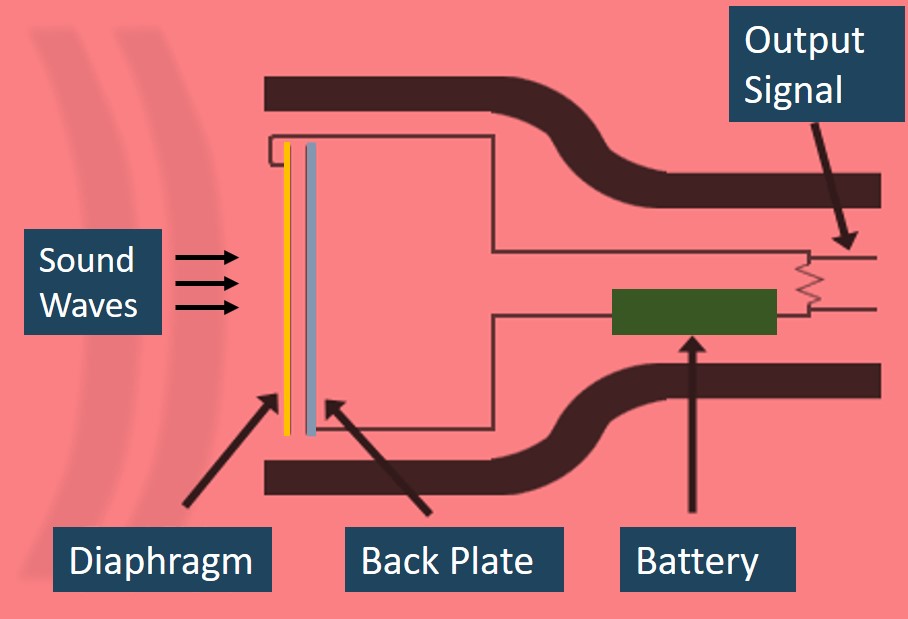
The output in this case generally very Weak and hence needs an additional circuit called “impedance converter”. This makes the signal strong and can be used for further processing.
A voltage is required across the capacitor for this to work. This voltage is supplied either by a battery in the mic or by external power. This is also known as phantom power.
Advantage of condenser microphone
- The diaphragm which is the moving member in case of condenser microphone of a condenser microphone has a very low mass compared to the high coil mass in case of a dynamic microphone. The diaphragm can move more easily and quickly in tune with the sound waves. Condenser microphones, therefore, offer superior sound quality.
- Condensers have the widest frequency response and the best transient response and can pick up sudden bursts of sound energy if placed sufficiently away. They can get overloaded if sound source is too close and too loud.
- Condenser microphones usually offer much higher sensitivity
- Condenser microphones have a more transparent sound and when used a little further away from your mouth would deliver a natural conversational tone. This can be very pleasant to listen to.
Disadvantages of condenser microphone
- Condenser microphone increases the likelihood of picking up sound from co-hosts and the room in general. If you are using a condenser mic, you’ll need to be more mindful of how many people are talking at any time and make sure the room is extremely quiet.
- Condenser microphone are better suited for acoustically traded room.
- Condenser microphones are not as sturdy as dynamic microphones and need to be handled carefully and taken good care of.
- Condenser microphones can be more expensive. At same price a dynamic mic can be better sounding than a condenser mic. However, at higher price points, condenser mics can really shine.
- Condenser mics require additional power supply known as phantom power.
- They are more complex than dynamic microphones and tend to be more adversely affected by extremes of temperature and humidity
Examples of condenser microphones for podcasting.
- Blue Yeti USB Condenser Microphone
- Audio-Technica AT2035 Large Diaphragm Studio Condenser Microphone
- Blue Snowball iCE Condenser Microphone
- Samson Go Mic Portable USB Condenser Microphone
- Rode NT-USB Condenser Microphone
As an Amazon Associate I earn from qualifying purchases
Summery: Dynamic Or Condenser Microphone for podcasting
To summarize it all, Dynamic mic is something you can start with, it can be a good overall microphone for podcasting. It can give you same or better audio quality at lower price points. You may not need a perfectly acoustic treated room or studio to use a dynamic microphone.
On the other hand, if you can spend some extra money, have a good recording room / studio, then condenser mic will certainly give you an overall better and rich sound quality.
Dynamic mics can give you a good low-end sound if you get close enough while condenser mics can give a rich conversational sound.
So, choose the mic as per your application requirement, you won’t go wrong with either of them if you select a good quality microphone.
Welcome to your podcasting journey with quickstartpodcast team.
Below paragraphs have links to all our posts in a logical manner starting from being a podcast listener to being a podcast creator.
The podcast Listener phase :
The podcasting journey generally begins with various questions such as what is a podcast , what a podcast is used for ? how to listen to a podcast , what are the best android and iOS apps to listen to podcast .
Depending upon the things that you like you will search for fiction podcasts , educational podcasts etc. Most of the people restrict their journey in podcasting to this level. They just end up being listeners to podcasts. Some of then take the next leap of faith and decide to start their own podcast.
Podcast creator Phase :
How to start your podcast ? is the main question they are faced with . Once that you have decided to start a podcast , what should be the name of the podcast , what should be the podcast format , which podcasting niche should you chose , what should be episode titles , what are popular podcast formats and what should be mine and so on ..
What is the right equipment for creating a podcast , what are the best XLR , USB , Condenser and dynamic microphones available. Can I record my podcast in an iPHONE , What should be the polar pattern , should I use an audio interface or a mixer , do I need a POP filter . There are so many question . How much podcasting will cost me , what are different setups based on my budget.
Once you in the journey of podcasting you will need to decide how should be a great podcast intro , how to record the podcast , how to record podcast online , how to test the mic , what should be length and frequency of my podcast , how to make great sounding podcasts and finally how to make money from podcasting ? ..
Whats is a podcast host and do I need one ?? , Uploading podcasts to google podcast and Apple podcasts are also crucial steps.
The journey starts from being a podcast listener going all the way to being a great podcast creator and quickstartpodcast is there with you in all this journey.
